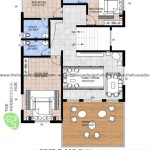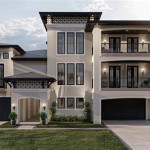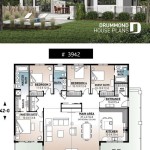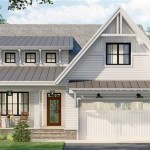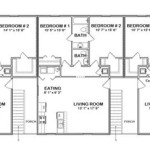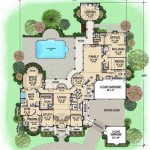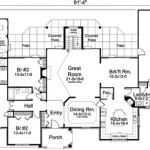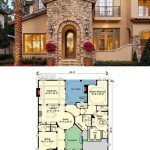Lake House Plans For Narrow Lots: Maximizing Space and Views
The allure of lakeside living is undeniable, offering tranquility, recreational opportunities, and stunning natural vistas. However, securing a wide, expansive lot directly on the waterfront can be challenging and often prohibitively expensive. The good news is that a narrow lot doesn't have to preclude the dream of owning a lake house. With thoughtful planning and innovative design, it is possible to create a functional and aesthetically pleasing lake house even on a limited footprint. Optimizing space, prioritizing views, and adhering to local regulations are crucial considerations when developing lake house plans for narrow lots. This article will explore key aspects of designing and building a lake house tailored for these specific site constraints.
Understanding the Challenges of Narrow Lots
Building on a narrow lot presents unique architectural and construction challenges compared to building on a more generously sized property. These challenges require careful consideration early in the design process to ensure the final outcome meets the homeowner's needs and expectations. One primary challenge is limited width, which directly impacts the potential floor plan and layout of the house. Traditional designs often rely on sprawling horizontal space, which is simply not an option on a narrow lot. This constraint necessitates vertical building, potentially leading to multi-story structures or creative stacking of rooms.
Another significant challenge is site access during construction. Narrow lots often have limited space for equipment maneuvering and material storage. This can increase construction time and costs, as contractors may need to utilize smaller equipment or develop strategies for just-in-time material delivery. Furthermore, setback requirements and easements can further constrict the buildable area, reducing the design envelope even further. Setbacks are mandated distances between the building and property lines, while easements grant certain rights to other parties, such as utility companies, which can restrict building within designated areas.
Finally, privacy can be a concern on narrow lots, especially in densely developed lake communities. Close proximity to neighboring properties can impact the feeling of seclusion and tranquility that homeowners often seek in a lake house. Careful consideration of window placement, landscaping, and outdoor living areas is essential to mitigate privacy issues and create a more secluded environment. Utilizing strategically placed trees, shrubs, and fencing can help to screen views from adjacent properties and enhance the sense of privacy.
Key Design Strategies for Narrow Lake House Lots
Successfully designing a lake house for a narrow lot requires a strategic approach that prioritizes space optimization, view maximization, and functional living. Several design strategies can be employed to overcome the limitations of the site and create a comfortable and aesthetically appealing home. One of the most effective strategies is to embrace verticality. Building upwards, instead of outwards, allows for maximizing the square footage of the house without encroaching on the limited lot width. Multi-story designs can offer separate living areas, bedrooms, and recreational spaces while maintaining a relatively small footprint.
Another critical strategy is to prioritize open floor plans. Eliminating interior walls and creating large, interconnected spaces can make the house feel more spacious and airy. Open layouts also allow for better natural light penetration and facilitate seamless transitions between different living areas. In the case of lake houses, an open floor plan can maximize views of the water from various vantage points within the home. Strategic placement of large windows and sliding glass doors can further enhance the connection to the outdoors and bring the beauty of the lake inside.
Maximizing outdoor living space is also essential for narrow lake lots. Since interior space is limited, extending the living area outdoors can significantly enhance the enjoyment of the property. Decks, patios, and balconies can provide additional space for relaxation, entertaining, and dining. Consider incorporating features such as outdoor kitchens, fireplaces, and comfortable seating areas to create inviting and functional outdoor spaces. Pergolas, awnings, and strategically placed landscaping can also provide shade and enhance privacy.
Thoughtful use of materials and finishes can also contribute to the overall feeling of spaciousness and light. Light colors and reflective surfaces can help to bounce light around the interior, making the rooms feel brighter and more open. Incorporating natural materials such as wood and stone can create a warm and inviting atmosphere while connecting the house to its natural surroundings. Consider incorporating windows and doors that are energy efficient. The choice of windows and doors can affect energy costs and overall insulation of the build.
Finally, consider incorporating smart storage solutions throughout the house. Built-in shelving, hidden compartments, and multi-functional furniture can help to maximize storage space and minimize clutter. Creating designated storage areas for recreational equipment, such as kayaks, paddleboards, and fishing gear, is also important for maintaining an organized and functional lake house.
Navigating Regulations and Site Conditions
Before embarking on the design and construction of a lake house on a narrow lot, it is imperative to thoroughly understand and comply with local regulations and address any site-specific conditions. Zoning regulations, building codes, and environmental regulations can all impact the design and construction process. Zoning regulations dictate permissible land uses, building heights, setbacks, and other development standards. Building codes ensure the safety and structural integrity of the building, while environmental regulations protect the natural resources of the lake and surrounding area. It is crucial to consult with local authorities and obtain all necessary permits before commencing any construction work.
Site conditions, such as soil type, slope, and proximity to the water's edge, also need to be carefully assessed. Soil testing can determine the load-bearing capacity of the soil and identify any potential issues, such as unstable soil or the presence of groundwater. The slope of the lot can impact drainage and require special grading or retaining wall solutions. Proximity to the water's edge can affect building setbacks and may necessitate special construction techniques to protect the shoreline from erosion.
Moreover, consider the potential impact of the lake on the house's foundation. High water levels, wave action, and ice formation can all pose risks to the structural integrity of the foundation. It may be necessary to incorporate reinforced concrete, pilings, or other protective measures to mitigate these risks. Engaging with experienced engineers and contractors who are familiar with lakefront construction is essential for ensuring the long-term durability and stability of the house.
Furthermore, consider accessibility to utilities, such as water, sewer, and electricity. Narrow lots may have limited access to these utilities, which can increase the cost and complexity of the project. It may be necessary to extend utility lines from adjacent properties or install alternative systems, such as septic tanks or well water systems. Careful planning and coordination with utility providers are essential for ensuring a smooth and efficient construction process.
Addressing drainage is also a critical aspect of site planning. Proper drainage is essential for preventing water damage to the house and surrounding property. Consider incorporating swales, French drains, or other drainage solutions to effectively manage stormwater runoff. Also consider the use of porous paving materials for driveways and walkways to reduce surface runoff and allow water to seep into the ground.
Maximizing Views and Natural Light
One of the primary motivations for building a lake house is to enjoy the stunning views and abundant natural light that lakeside living offers. Maximizing these elements is particularly important on narrow lots, where space is limited, and maintaining a connection to the outdoors is crucial. Strategically positioning the house on the lot to capture the best possible views is paramount. Consider the prevailing wind direction, sun exposure, and potential obstructions, such as trees or neighboring buildings, when determining the optimal placement of the house.
The placement of windows and doors is also critical for maximizing views and natural light. Large windows, sliding glass doors, and skylights can flood the interior with natural light and provide unobstructed views of the lake. Consider incorporating floor-to-ceiling windows in key living areas, such as the living room and master bedroom, to create a dramatic and immersive experience. Clerestory windows, which are placed high on the walls, can also be used to bring in natural light without compromising privacy.
In addition to window placement, the orientation of the house can also impact the amount of natural light it receives. Orienting the house to face south can maximize solar gain during the winter months, reducing heating costs. However, it is also important to consider the potential for overheating during the summer months. Overhangs, awnings, and strategically placed trees can provide shade and help to regulate the temperature inside the house.
The use of light-colored interior finishes can also help to maximize natural light. Light walls, ceilings, and floors reflect light and make the rooms feel brighter and more open. Mirrors can also be used to reflect light and create the illusion of more space. Consider incorporating reflective materials, such as stainless steel or glass tile, in the kitchen and bathrooms to enhance the sense of brightness.
Finally, consider the impact of landscaping on views and natural light. Strategically planting trees and shrubs can provide privacy and shade, while also framing the views of the lake. Avoid planting trees that will obstruct the views from the house as they mature. Consider incorporating low-growing shrubs and flowering plants to create a beautiful and inviting landscape that complements the architecture of the house.

Open Concept Small Lake House Plans Houseplans Blog Com

Small Cosy Homes Narrow Lot House Plans Mediterranean Style Lake

House Plans For Narrow Lots On Waterfront Lake Lot Small Houses

Narrow Lot Lake House An Ideabook By Bcfry

House Plan Of The Week Narrow Lot Beach Home Designers

Narrow Lot House Plan For Lake Lots Max Fulbright Designs

Narrow Lot Lake House Floor Plans

2 Story House Plans For Narrow Lots Blog Builderhouseplans Com

Craftsman House Plan Narrow Lot Bungalow Style Floor Lake Plans

Simple Narrow Lot House Plans Houseplans Blog Com

